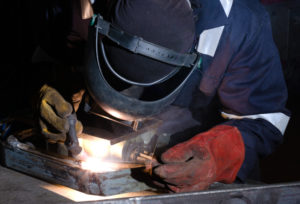Achieving Toughness In P91 Welds From Root To Cap

Welding of Grade 91 (9Cr-1Mo-V) chromium-molybdenum steel has presented numerous challenges since its introduction in the 1970s. The gas tungsten-arc (GTAW) process can produce welds of high quality; however, manual welding can be expensive and labor intensive, requiring skilled welders with extreme hand-eye coordination and dexterity. Grade 91 productivity can be increased in either shop or field fabrication by introducing a semiautomatic high deposition metal transfer (HDMT) GTAW welding process that combines controlled excitation of wire with a hot wire addition. This technique is cost effective and can be used for the entire weld from root to cap while producing high quality welds that industry expects from the GTAW process.
Power piping systems using Grade 91 materials that are designed, fabricated and installed in accordance with ASME Section I [1] and B31.1 [2] do not have minimum toughness rules. Some Owners and designers do, however, often impose minimum toughness requirements. Since Grade 91 was introduced over 50 years ago, no failure due to toughness of a properly post weld heat treated (PWHT’d) Grade 91 weldment has been reported.
The reasons for the low impact values of weld metal produced by some semiautomatic hot wire processes can be attributed to the inability to temper previously deposited weld beads due to the larger weld metal bead or layer thickness. The dynamics of the weld pool during deposition and the heat flow during solidification play an important role in the resulting mechanical properties of the weld metal. The principal difference is simply the manner in which the wire is aggressively manipulated while introduced into the weld puddle and the fact that the wire is preheated by a secondary current (producing the hot wire feed) while providing a dynamic weld pool.
Results of this study indicate that semiautomatic HDMT GTAW welding process is capable of producing toughness values comparable to or exceeding manual GTAW and that the process provides an attractive alternative for welding P91 root and hot passes or the entire weld from root to cap.
Read Full Article (PDF)
